Grenada is demonstrating impressive progress in the field of renewable energy with its solar energy projects, wind energy initiatives, and geothermal potential exploration.
By 2030, the island’s government hopes to cut carbon emissions and produce 50% of its energy from renewable sources. This goal is shared with international partners. Local communities are adopting the green movement and making daily decisions that support a future that is more sustainable. Government policies and attractive incentives further support the nation’s transformation towards greener energy.
Solar Power PlantSolar PV53,5002,000 households powered
Wind Farm ExpansionWind85,200Reduced reliance on fossil fuels
Biomass PlantBiomass32,000Utilized agricultural waste
Energy EfficiencyEfficiencyN/A1,800Lowered consumption in gov. buildings
Community SolarSolar Community1800Affordable energy for communities
Grenada’s collective effort underscores the global nature of the renewable energy movement, demonstrating how partnerships can shape a more sustainable planet.
Solar Power Projects
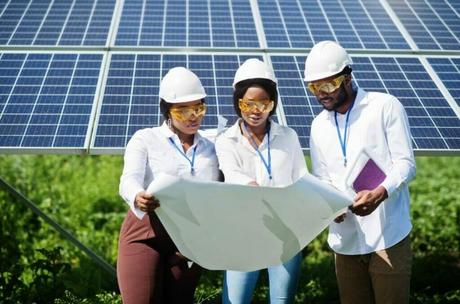
Grenada’s sun-kissed beaches aren’t just a paradise for tourists; they’re a goldmine for the island’s energy sector. The “Spice Island” receives an abundance of sunlight, perfect for harnessing solar power. Currently, the government, with help from foreign investors, is spearheading significant solar projects. The goal? to choose a more sustainable future and lessen reliance on fossil fuels.
The installation of photovoltaic systems in public buildings and educational institutions is one initiative that stands out. This program reduces energy expenditures while simultaneously giving the younger generation a learning tool. Children are growing up understanding the importance and viability of solar energy, setting the stage for a more ecologically aware citizenry.
But it’s not just large-scale projects catching the sunlight. Many Grenadian households are joining the solar revolution. They’re installing solar panels on rooftops and adopting solar water heaters, demonstrating the power of individual action in this green movement.
Critics argue that the high initial cost of solar technology is a barrier. However, the long-term savings and environmental benefits often outweigh this concern. Plus, Grenada is exploring various financing options to make solar energy more affordable for all.
In the grand scheme of things, solar power is more than just an energy solution for Grenada. It’s a way of life, a shift in mindset that’s lighting up homes, powering schools, and inspiring an island.
Wind Energy Initiatives
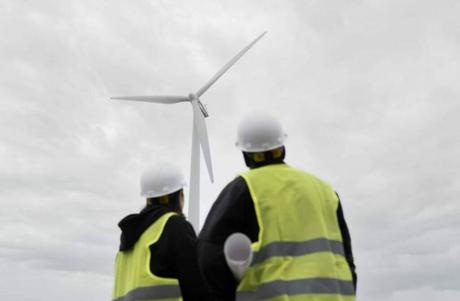
Next on Grenada’s green energy list is the power of the wind. Perched in the path of the northeast trade winds, the island is blessed with a year-round supply of this renewable resource.
The government has shown interest in harnessing this potential through various initiatives. A key project is the proposed wind farm at Mount Hartman. With a generation capacity of 13MW, this farm could provide an immense boost to the country’s energy matrix.
The wind energy projects are not solely focused on electricity generation. They also aim to support other sectors. For example, wind-powered desalination plants are under consideration. These could provide a sustainable solution to the water scarcity issues faced by many Caribbean islands.
The road to wind energy, however, isn’t without challenges. Concerns about the environmental impact on local bird species, especially in areas like Mount Hartman, require careful balancing. It’s a delicate dance – advancing renewable energy while preserving biodiversity.
Yet, with the right approach and careful planning, wind energy holds great promise for Grenada. It’s another step towards a sustainable future, a gust of fresh air in the island’s renewable energy narrative.
Geothermal Potential
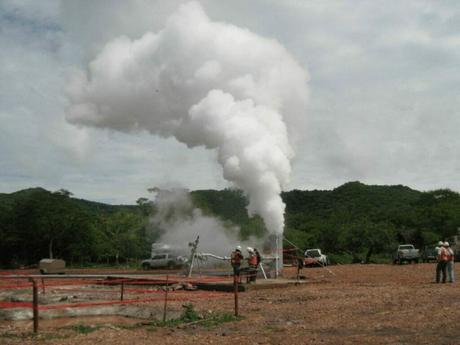
While Grenada basks in the sun and dances in the wind, there’s a powerful energy source brewing beneath its feet. It’s geothermal energy – harnessing the heat from the earth’s interior. The island, part of the volcanic Caribbean Plate, has significant geothermal potential.
To tap into this resource, Grenada has partnered with New Zealand and the World Bank for a geothermal exploration project. The aim is to assess the feasibility of commercial geothermal power. The potential benefits? more price stability for power, a decrease in greenhouse gas emissions, and new employment possibilities.
Geothermal energy development is not without its challenges, of course. The procedure is costly, calls for a high level of technical competence, and carries some risk. However, if the project is successful, Grenada might lead the Caribbean region in the use of geothermal energy.
Local communities play a vital role in this energy transition. Their understanding and support of the geothermal project are critical to its success. Therefore, Grenada is focusing on education campaigns, community meetings, and public consultations – ensuring everyone is on board and informed.
Sustainable Energy Goals
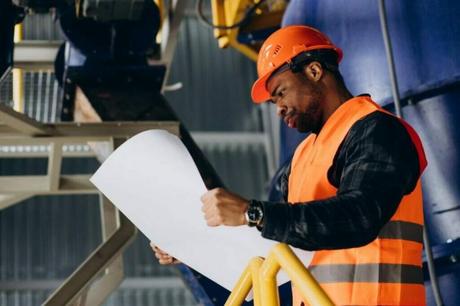
All these initiatives tie into Grenada’s larger sustainable energy goals. The small island country is working hard to establish itself as an example of sustainable development for other SIDS.
Grenada wants to produce 50% of its energy from renewable sources by 2030 and cut its carbon emissions by 40%. These figures are more than just a list of statistics on a policy document. They’re the targets driving the country’s renewable energy initiatives.
Central to achieving these goals is a ‘whole-of-society’ approach. This involves the government, businesses, civil society, and individuals pulling together towards a common green goal. It’s about transitioning not just the country’s energy sector, but its mindset towards sustainability.
While challenges are inevitable, the pursuit of these goals is a testament to Grenada’s commitment to our planet. This small island is making big moves, reminding us that we all have a role in crafting a more sustainable, resilient future.
Local Community Engagement
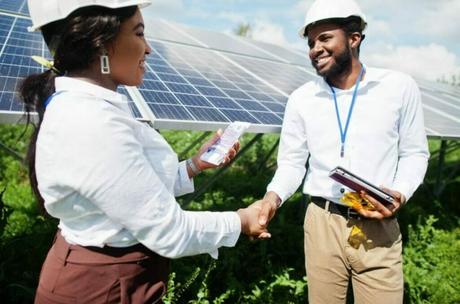
Let’s shine a light on the Grenadian locals – the heart of the island. For them, renewable energy isn’t merely a concept on paper. It’s a reality transforming their lives, their homes, and their businesses.
Take the story of Mrs. Peters, a local shop owner in St. George’s, the capital city. She adopted solar power for her shop three years ago. Now, she enjoys reduced electricity bills and takes pride in her contribution to the environment. She jokes, “I’m saving cash and saving our island at the same time.”
Similar to this, Mr. James, a farmer in the north, put a little wind turbine on his property. With consistent wind patterns in his area, his windmill helps power his irrigation system. “I’m not just farming crops; I’m farming wind, too,” he jokingly remarks.
The Grenadian government has been instrumental in encouraging such adoption. They’ve set up programs to provide locals with technical training in renewable energy systems. This empowers them not only to install these systems but also maintain them.
These kinds of tales are dispersed all throughout the island, fostering a resilient and sustainable culture. They demonstrate that embracing renewable energy involves more than just undertaking large-scale initiatives; it also involves the regular decisions made by regular individuals.
Government Policies

What’s driving Grenada’s renewable energy push? It’s a mixture of forward-thinking government policies and tangible incentives.
The Grenadian government has introduced several laws to promote renewable energy. The Electricity Supply Act 2016, for instance, encourages independent power producers by permitting them to generate and sell electricity.
Also in place are attractive fiscal incentives, including import duty exemptions for renewable energy equipment and tax credits for companies investing in renewable energy projects. These measures make it economically advantageous for businesses and households to adopt green energy.
Moreover, the government’s 2035 National Energy Policy outlines a comprehensive roadmap for a sustainable energy sector. It includes specific strategies to encourage renewable energy, energy efficiency, and a reduction in carbon emissions.
These policies reflect the government’s commitment to a greener future. They set a firm foundation for Grenada’s renewable energy transformation and invite everyone to participate in it.
Collaboration with Other Countries/Entities
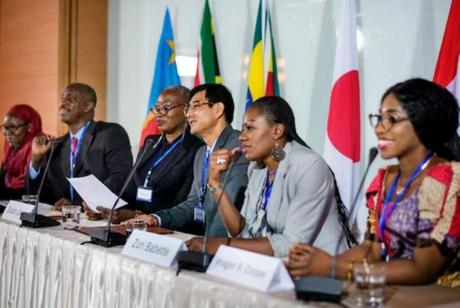
Grenada’s renewable energy journey isn’t a solo expedition. It’s a collective effort, supported by various international partners.
The island has collaborated with several entities beyond New Zealand and the World Bank. For example, Grenada has partnered with the Caribbean Community Climate Change Centre (CCCCC). Together, they’ve implemented projects to improve energy efficiency and develop renewable energy capacity.
The European Union has also been a crucial ally. They’ve provided substantial funding for solar power projects and energy efficiency initiatives under the Sustainable and Resilient Communities in Grenada program.
Additionally, Grenada is part of the Caribbean Sustainable Energy Roadmap and Strategy (C-SERMS) platform. This regional initiative provides a framework for collaboration on sustainable energy policies and actions.
Such partnerships underscore the global nature of the renewable energy movement. They show how countries and organizations can come together, share knowledge, and work towards a shared goal – a sustainable planet.
FAQ
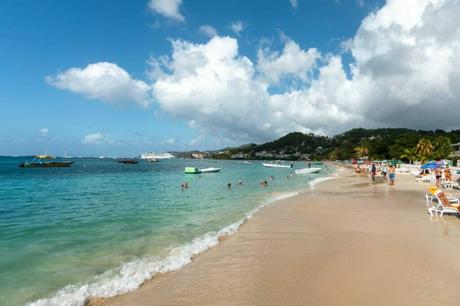
What are the renewable resources in Grenada?
Grenada boasts abundant renewable resources, including solar and wind energy. Its sun-kissed beaches and favorable climate make solar power a promising energy source. The island’s location in the path of northeast trade winds allows for the harnessing of wind energy.
What sources of energy does Grenada use?
The majority of Grenada’s energy comes from fossil fuels like oil and gas. But the nation is actively pursuing the switch to renewable energy sources, including solar, wind, and perhaps geothermal.
Does Grenada use geothermal energy?
Due to its volcanic nature, Grenada has enormous geothermal potential, but it has not yet properly tapped into this resource. However, the nation has teamed up with New Zealand and the World Bank to investigate the viability of using this renewable resource for environmentally friendly power production.

